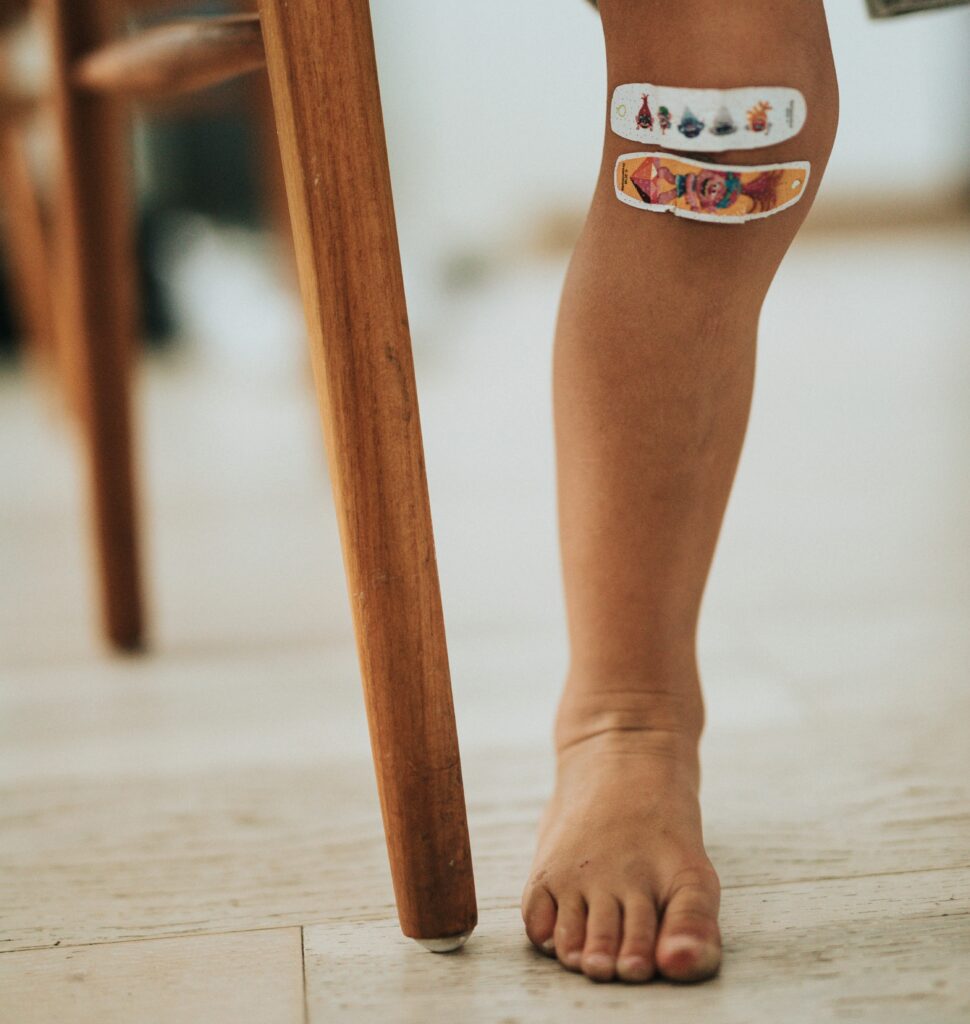Children with autism can have any number of challenging behaviours but how do you stop an autistic child picking scabs?
Here at Autism Parents we can never be accused of swerving the difficult topics. So let’s look at the behaviour and see what can be done to stop it.
Autism and scab picking
As parents, we all want what’s best for our children no matter how squeamish we may be.
For parents of children with autism, it can be particularly challenging to navigate the unique needs and behaviours that accompany the condition.
One such behaviour that some autistic children may exhibit is picking scabs.
Although it can be concerning and difficult to witness, it’s essential to approach this issue with understanding, and patience.
In this article, we’ll explore the reasons behind scab picking and provide practical strategies to help your child overcome this behaviour.
About the behaviour
Scab picking is a relatively common behaviour in a number of children, it often serves as a way of coping with anxiety, or stress.
Autistic children may struggle to communicate their emotions effectively, leading them to engage in repetitive behaviours like scab picking as a means of self-regulation.
Furthermore, picking at scabs may also provide sensory feedback that some autistic children find comforting.
This could snowball and lead to the behaviour becoming a habit or repetitive action over time.
Tackling the behaviour
First and foremost, it’s crucial for parents to approach their child’s scab picking behaviour with patience.
As difficult as it may be, parents should recognise that this behaviour is likely a response to their unique challenges.
Skin care awareness
Depending on your child’s level of communication and understanding, teach your child the importance of skin care.
You can also explain how picking scabs can lead to infection or slow down the healing process.
If the message isn’t getting through verbally you could use videos on YouTube to highlight the importance.
Use plasters/band-aids
This suggestion may be parked in the stating the obvious bracket but don’t underestimate the power of a good plaster.
Try covering even the smallest of scabs to make it more difficult and less appealing to get to.
Plasters can be very slightly painful to pull off so that may stop your child from even trying.
In addition plasters come in all different colours and designs, you could therefore pick those which are appealing to your child.
You could even involve them in the process of choosing the plasters in a store or from your medical supplies.

Wear appropriate clothing
In the same mould as using plasters, you can dress your child in clothes which make scab picking difficult.
Naturally you can’t keep them in long sleeves and long trousers 24/7 but you can improve the frequency.
Remember, you are trying to break what may have become a routine or habit, so if you can fend the behaviour off for a while that is a win.
Use a reward system
Implement a reward system to motivate your child to reduce scab picking.
Offer praise, small rewards, or a token system for every period they refrain from the behaviour.
Naturally this too would depend on your child’s level of understanding but you could provide a big ‘prize’ when a cut is fully healed.
Offer sensory alternative
Offer your child alternative sensory activities that can provide similar feedback to scab picking.
This might include squeezing stress balls, playing with a vibrating oral toy, or engaging in other sensory-rich activities that can help redirect their focus away from scabs.
These toys can serve as an immediate distraction should you notice your child starting to pick at a scab.
Model good behaviour
Children often learn by imitating their parents or caregivers.
Show them healthy ways to manage stress and anxiety so they can learn from your positive examples.
We are not suggesting that all you readers are sitting at home picking scabs. However it is common for most people to pull or fiddle with something like loose skin.
Try to lead by example utilising plasters/band aids yourself to cover even the slightest of cut.
You could even ask your child to help, if they place the plaster on you they are more likely to soak in the process.
Last resort?
If your autistic child’s scab picking is becoming such a problem you could try therapy.
Consult with an occupational therapist who specialises in working with children on the autism spectrum.
They can provide tailored strategies to address sensory needs and promote healthier coping mechanisms.
Summary – How to stop an autistic child’s scab picking
Helping an autistic child stop picking scabs requires patience, understanding, and gentle guidance.
By recognising the underlying reasons behind this behaviour and providing alternative coping strategies, parents can support their child on their journey towards better self care.
With love, empathy, and consistent effort, we can help our children navigate the challenges of autism and end challenging behaviours.

